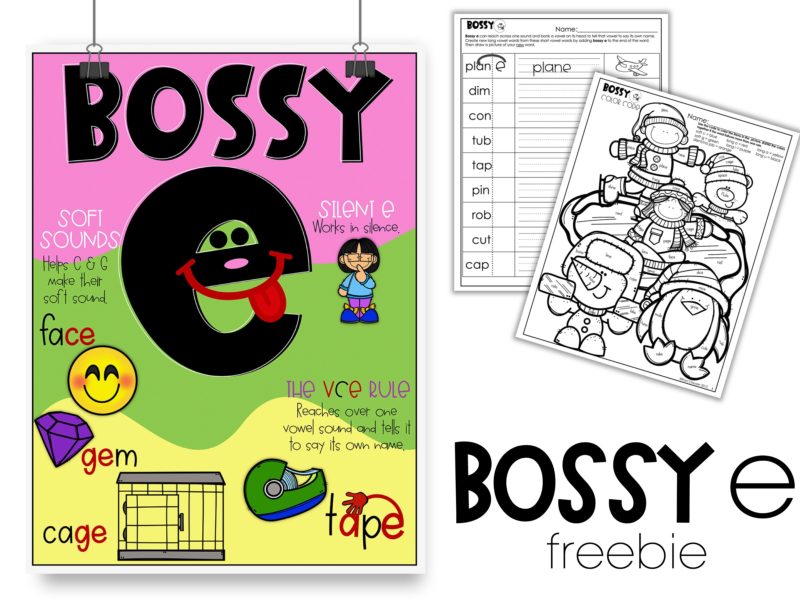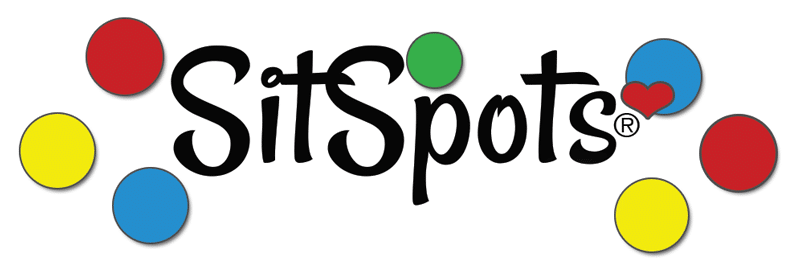Teaching literacy, despite its many challenges, is so rewarding and fun. All the abundance of phonic rules, like bossy e and silent e definitely keep us primary teachers busy.
Phonic Rules
Phonic rules are one of my absolute favorite things. I love watching the lightbulbs go off when I introduce a new rule. Even the kiddos who read FAR above grade level get a thrill out of the knowledge that are rules behind a lot of this wacky stuff that is English.
Each week we spend a LOT of time dissecting, ingesting and playing with phonic rules. Reading Foundation with Phonics is the primary part of our DAILY work. This investment in understanding phonic rules (and the absence thereof!) pays off huge!
Bossy E & Silent E
The reality is, little ol’ e goes by many monikers: Bossy e, Silent e, Magic e, Partner e, Lazy e, and even Super e. No matter how you refer to this vital part of phonics instruction, e has more jobs than any other letter of the alphabet!
When we start to incorporate all of the many jobs of E into our phonic study – things get interesting and I LOVE it. This is the turning point. When those kiddos find out all that e does, text decoding takes a huge leap!
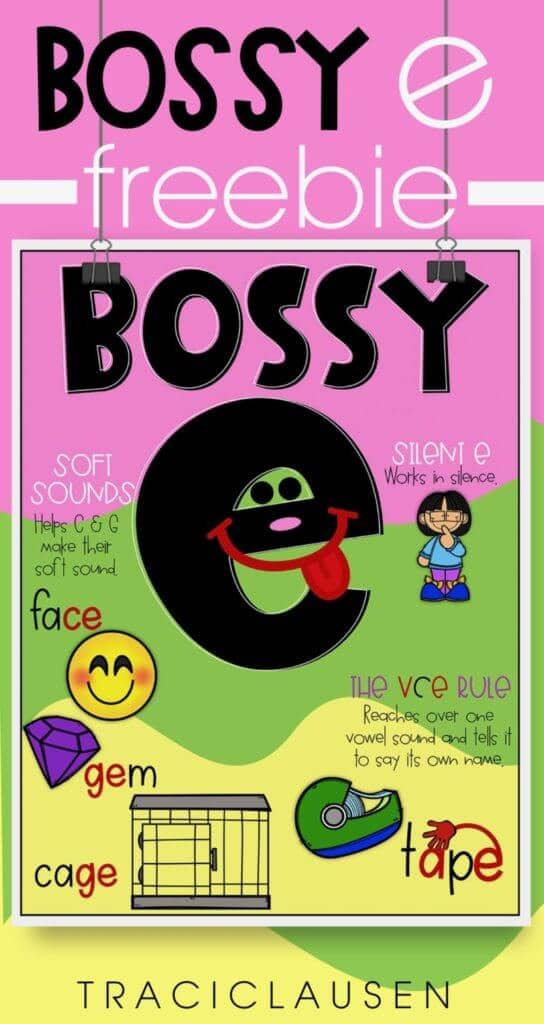
Vowel-consonant-e (VCE) sounds are the first ones we cover. This is a great way to introduce long vowels and the silent e.
However, even though e is silent – his job is to be in charge! I remind the kiddos that e sits there at the end, ONE CONSONANT SOUND from the vowel. He can reach over that one consonant sound at tap the vowel to tell it “Say your own name.” AND he does this in absolute silence!
This visual keeps the kiddos engaged. Keeps the interested. Helps them remember. Bossy e & Silent e usually arrive at the party together.
Yay to no more saying the short e sound at the end of words! Yay to a complete understanding as to WHY the e is silently sitting there!
With the introduction of this rule, a whole new world of reading opens up for a lot of kiddos, especially those who were struggling a bit to make progress. Now they can read a larger variety of text because long vowels become part of the everyday routine.
Soft C & Soft G
E’s other important rule has a big part in a couple of weird consonant rules. Our little firsties have cemented the 26 sounds of the alphabet and maybe even the long vowel sounds. There are probably a few known digraphs in there, too! Let’s throw soft c & soft g into the mix to make it more fun! Why does English have to be so complicated?
Luckily our good friend Bossy e is there to help out. I demonstrate to my kiddos that when e comes after the letters C or G, it makes them quiet. Instead of saying a hard /g/ or /c/, the e makes C turn into a /s/ and G becomes a /j/. We call these sounds soft C and G.
Applying Skills & Building Mastery
We truly practice these skills a TON throughout our daily Reading Foundations practice – independently, with small, guided groups and with our word work.
Ultimately, our goal is to apply this newly gained knowledge in a variety of ways. I include a couple pages in those activities.
Adding silent e to CVC words in order to create CVCE words is a fun way to cement this new knowledge. Those lightbulb moments really start to shine. The fun thing is, this carries over into writing and MY decoding skills aren’t tested as much anymore. The kiddos start to sound out words incorporating LONG and SHORT vowel spellings! Yay!
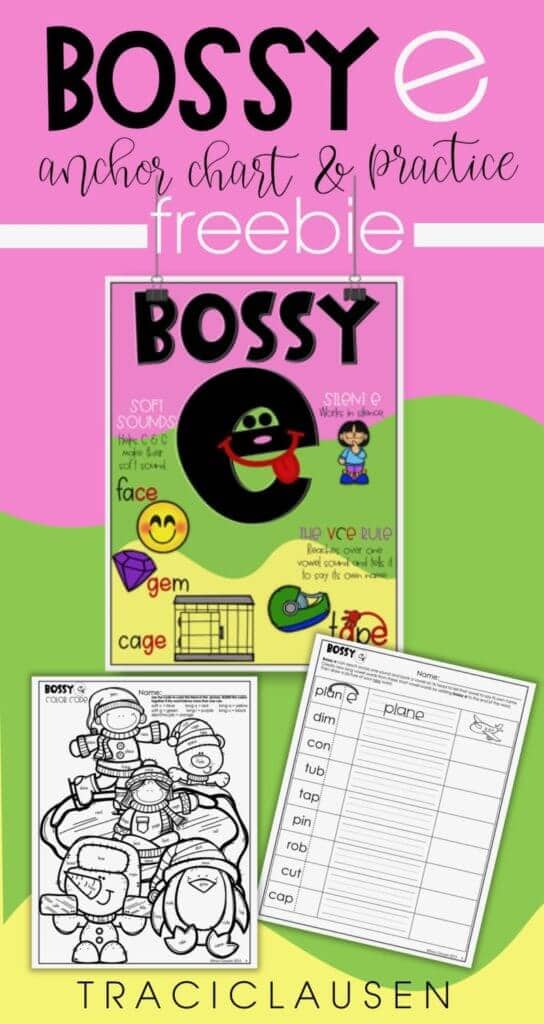
We finalize the Bossy e lessons with how the rules can occur in tandem. For example:
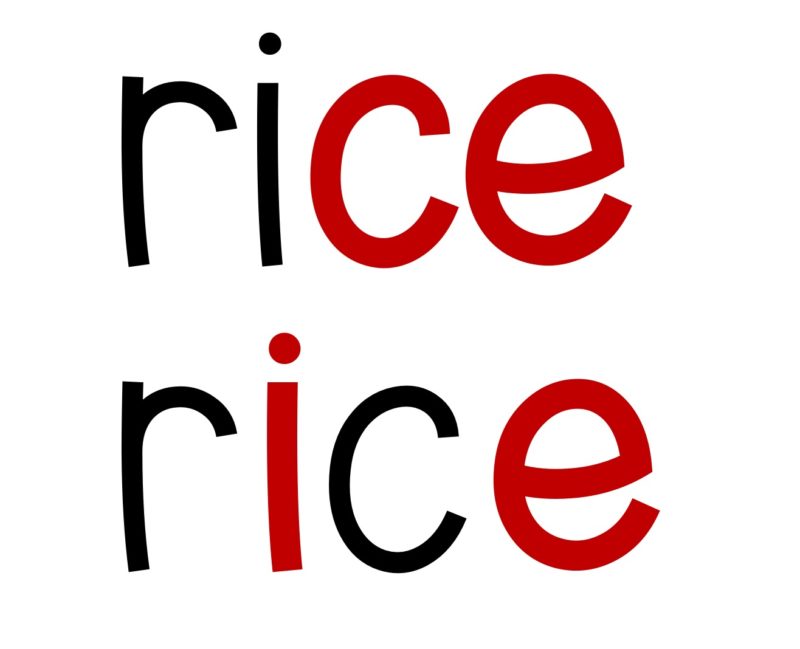
This one word contains two jobs for Bossy e. I have my students practice looking for the many things that e is doing in words. On the coloring activity, the kiddos BLEND two colors together in certain areas to exemplify the two different actions of Bossy e.
FREEBIE!
All of the different jobs of Bossy e are covered in Reading Foundations with Phonics – Long Vowels Volume 1. Check it out for some thorough lessons that take your kiddos from introduction to guided and independent practice along with word work play. This anchor chart and these pages provide even more practice and schema gain activities!
I’m happy to share this anchor chart and these activities with you and your kiddos for FREE! Send me your email on the image below and I’ll send them to your inbox.


